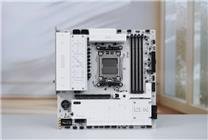Intel’s Groundbreaking Patent: Enhancing CPU Performance with Software-Defined Super Cores
On August 31, Intel unveiled a transformative innovation in CPU technology with its patent EP4579444A1, focusing on enhancing single-threaded performance through Software-Defined Super Cores (SDC). This breakthrough design leverages the collaborative power of multiple smaller cores, significantly altering the landscape of CPU architecture.
The Limitations of Traditional CPU Design
Traditionally, CPUs improve performance by employing larger cores. However, as core sizes increase, the marginal gains in performance tend to diminish, presenting a significant hurdle in achieving greater efficiency. The new patent addresses this issue by introducing a software-driven approach to leveraging smaller cores more effectively.
Understanding Software-Defined Super Cores
SDC technology enables several smaller cores to work in unison, effectively emulating a larger core when necessary. For instance, two smaller cores can combine their efforts to enhance single-threaded performance by distributing workloads efficiently. This coordinated approach allows for the splitting and allocation of instructions, ensuring that multiple cores maintain the necessary sequence of operations.
How SDC Works
The process begins with splitting instructions, distributing the workload among several smaller cores. These cores then communicate and cooperate to uphold the order of the instructions. While this synchronization may seem complex, the innovation lies in the ability to maintain the semblance of a single, larger core, ensuring single-threaded operations are handled smoothly.
A New Era of Task Management
Think of SDC as assigning a single task to two individuals rather than one. While this might sound like traditional multi-threading, SDC specifically targets and optimizes single-threaded operations. The essence of this approach is not merely about increasing output but maximizing efficiency in how tasks are distributed and executed.
Key Benefits of SDC Technology
Enhanced Single-Threaded Performance
By aggregating Instructions Per Cycle (IPC), SDC technology offers a notable boost in single-threaded performance without necessitating an increase in voltage or frequency. This efficiency means that users can expect improved performance in applications that rely heavily on single-thread execution, such as gaming and certain productivity applications.
Innovative Problem Solving
The challenge of assigning tasks across multiple cores while ensuring the correct order is a complex one. Intel’s patent claims to solve this problem effectively, providing a framework that allows software to interact with the processing units as though they are working with a single larger core. This remarkable feat could redefine how software interacts with hardware moving forward.
Future Implications
The introduction of Software-Defined Super Cores heralds a potential shift in CPU design philosophy, focusing on optimized task management rather than merely increasing core size. This approach may pave the way for future processors that balance power and performance more effectively, catering to a new generation of software demands.
Conclusion
Intel’s new patent for Software-Defined Super Cores marks a significant step forward in CPU technology by addressing the limitations of traditional core designs. By enabling smaller cores to collaborate and enhance single-threaded performance, SDC technology provides a promising solution to the challenges posed by increasingly demanding software applications. This innovation not only improves performance metrics but also sets a new standard for how CPUs can evolve in the future. As Intel continues to refine this technology, the implications for both developers and end-users could be profound, leading to more efficient and powerful computing experiences.
Stay tuned for further developments as Intel continues to push the boundaries of CPU performance!








